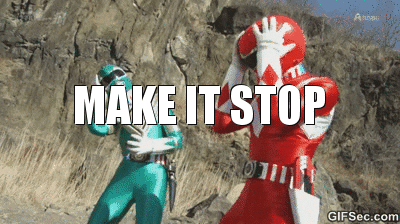Media Senior Director, Partner
Untamed remarketing: Drawing the line between conversion and intrusion
Media Senior Director, Partner
How many times have you visited an advertiser’s site, only to be repeatedly and frequently retargeted with the sole aim of getting you to eventually convert? The answer is probably far too often. This practice, which could be qualified as untamed remarketing, consists of exposing site visitors to ad banners as often as possible in order to re-insert them into the conversion process without any regards for exposure frequency or the feeling of intrusion that may occure. Essentially, we forget all about concepts like frequency, recency, and intrusion, and focus exclusively on conversion. However, there are several practices that allow advertisers to maximize conversion volume without creating the effect of intruding on the consumer. Here are three practical pieces of advice to help you increase the quality and relevancy of your remarketing tactics.
“This practice, which could be qualified as untamed remarketing, consists of exposing site visitors to ad banners as often as possible in order to re-insert them in the conversion process.”

1- Controling frequency
We can’t say this too many times, but keeping frequency under control is essential at every stage of your campaign. In the prospecting stage, frequency will be tighter in order to maximize your reach. At the remarketing phase, we have a tendency to open up our frequency to increase exposure to users with high potential for conversion. However, many advertisers will set a high frequency of impressions per day, while at the same time increasing their bids in order to maximize their win rate (impressions won/impressions bid upon). The problem with daily frequency is that you will probably win all the ad impressions for a single page when you reach one of your site visitors. It is therefore highly recommended that you set up an hourly frequency that will allow you to limit banner impressions over a short period and balance impressions over the course of the day. If you don’t specify any frequency and your user receives more than a dozen impressions in a single day… You might generate a few conversions, but how many users will you have irritated by constantly bombarding them with your banners over a short time span? It’s a question that every advertiser needs to ask themselves, and an analysis of recency can also help you adapt your frequency in an optimal way.

2- Analysing and controlling recency
Recency represents the amount of time that’s passed since a user appeared in your retargeting pool. An exhaustive analysis of recency can allow you to measure exactly how long after they enter the retargeting pool a user is most likely to proceed to a purchase or other type of conversion. Following this analysis, you will be able to adapt your impression frequency as a function of recency. This strategy will allow you to increase your visibility at the times that are most favourable for conversion.
3- Differentiating messages
Another common error consists of exposing all users to the same message, without considering where they are in the conversion process. Essentially, creating differentiated messaging based on the stages of the conversion funnel will allow you to communicate in a way that’s more relevant to your target users. In addition, people are less likely to get tired of your creative when you diminish the frequency of each individual message. By adding the variable of recency to your messaging strategy, you will be able to communicate a personalized message that increases your chance of conversion. However, it’s essential to have a good understanding of the barriers to conversion. Are they related to price? Is it because people don’t understand the product? The best way to find out is to do A/B testing, so you can get a more precise understanding of the elements that might prevent a user from converting.
To conclude, blasting your visitors with impressions is not recommended. By adopting a strategy that’s adapted to the customer journey and avoiding crossing over into intrusion, you will be able to deploy effective ad campaigns without damaging your brand image.
-2.png)






